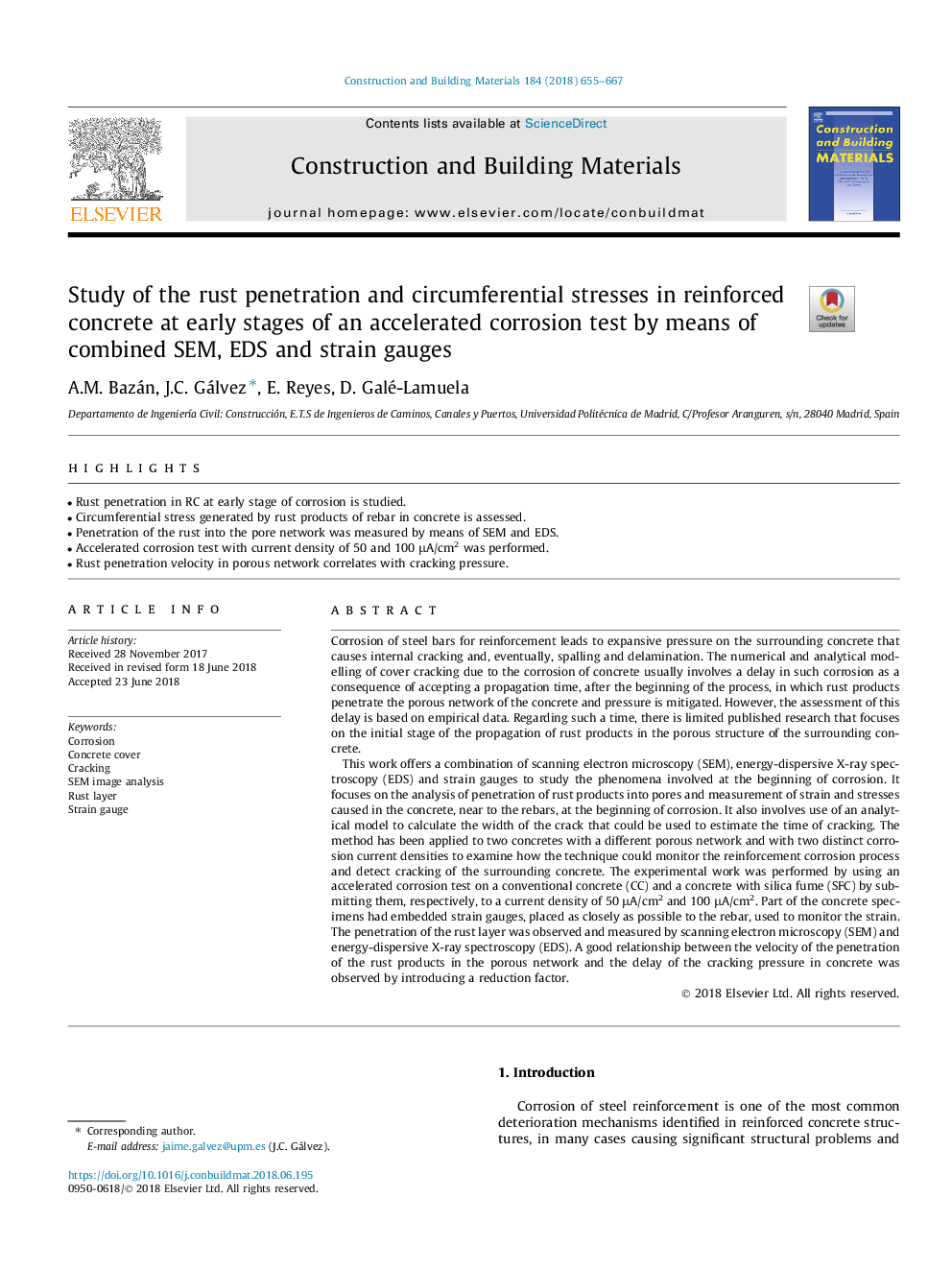| Article ID | Journal | Published Year | Pages | File Type |
|---|---|---|---|---|
| 6712233 | Construction and Building Materials | 2018 | 13 Pages |
Abstract
This work offers a combination of scanning electron microscopy (SEM), energy-dispersive X-ray spectroscopy (EDS) and strain gauges to study the phenomena involved at the beginning of corrosion. It focuses on the analysis of penetration of rust products into pores and measurement of strain and stresses caused in the concrete, near to the rebars, at the beginning of corrosion. It also involves use of an analytical model to calculate the width of the crack that could be used to estimate the time of cracking. The method has been applied to two concretes with a different porous network and with two distinct corrosion current densities to examine how the technique could monitor the reinforcement corrosion process and detect cracking of the surrounding concrete. The experimental work was performed by using an accelerated corrosion test on a conventional concrete (CC) and a concrete with silica fume (SFC) by submitting them, respectively, to a current density of 50â¯Î¼A/cm2 and 100â¯Î¼A/cm2. Part of the concrete specimens had embedded strain gauges, placed as closely as possible to the rebar, used to monitor the strain. The penetration of the rust layer was observed and measured by scanning electron microscopy (SEM) and energy-dispersive X-ray spectroscopy (EDS). A good relationship between the velocity of the penetration of the rust products in the porous network and the delay of the cracking pressure in concrete was observed by introducing a reduction factor.
Related Topics
Physical Sciences and Engineering
Engineering
Civil and Structural Engineering
Authors
A.M. Bazán, J.C. Gálvez, E. Reyes, D. Galé-Lamuela,
